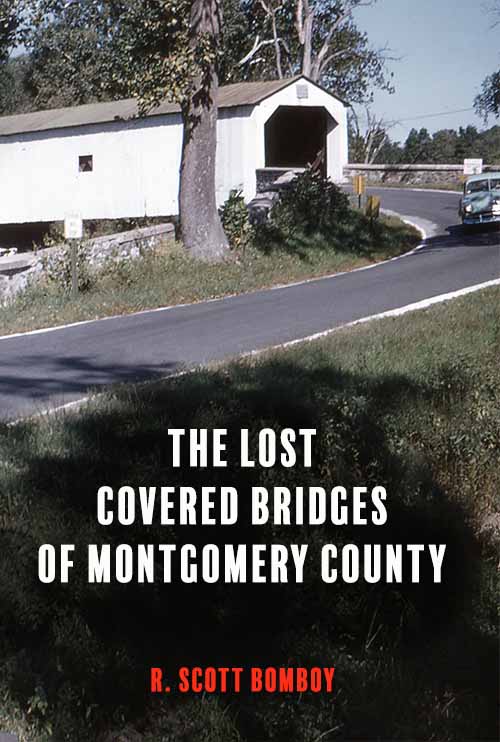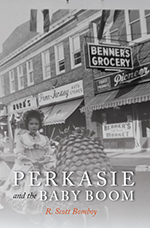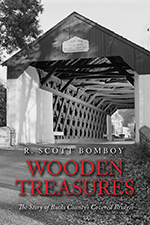One of the constants in our borough’s daily life for the past 120 years has been Perkasie Electric, the taxpayer-owned utility that provides service to residents and businesses in town. But many people do not know its origin story – and a decision in 1947 to keep its control locally.
In Perkasie Borough, there had been talk in the early 1890s about providing electric service to residents in conjunction with new trolley service coming to Perkasie. With three electric trolley companies interested in Perkasie, the early version of “the grid” was essential to those projects. Charles H. Edinger and Company of Philadelphia started planning the grid and power plant in 1898, and even paid for the cost of the ordinance to begin the project.

Perkasie’s Electric Plant in 1929
Edinger designed the first Perkasie power plant with the capacity to supply service to Bridgetown and Sellersville, with the expectation those communities would join the borough. The lights came on in Perkasie on February 23, 1900. By year’s end, the town-owned company had installed 87 meters, and it was considered a model of efficiency as other towns sent their leaders to inspect Perkasie’s plant.
In 1901, the man who led the department for three decades, Ed Frey, nearly died on a service call in South Perkasie at Harpel’s general store. Frey touched an arc light and was hit with a large burst of current. Somehow, he survived the incident.
Frey’s role in the electric department’s growth as superintendent was critical, but also controversial. His main job was running a privately owned business, also called Perkasie Electric, with his son Harvey that sold appliances and did building wiring. Some residents complained that they were denied borough electric service when they did not buy Frey’s products. The controversy came to a head in February 1924 when a divided borough council removed Frey as plant manager; however, council re-instated Frey that November in a vote boycotted by its three Ward 3 representatives.
 By the 1930s, Perkasie’s electric company made annual profits, but it also faced debts because of the borough’s growth, which led to constant projects to expand its power plant. In 1930, the borough invested $90,000 in upgrading the power plant. At that point, the department was also making $3,000 a month in net earnings, which made its debt manageable.
By the 1930s, Perkasie’s electric company made annual profits, but it also faced debts because of the borough’s growth, which led to constant projects to expand its power plant. In 1930, the borough invested $90,000 in upgrading the power plant. At that point, the department was also making $3,000 a month in net earnings, which made its debt manageable.
On January 3, 1938, Perkasie Borough Council discussed the alternative of selling its electric company – an option chosen by other towns – as part of a three-hour debate over its $120,000 plan to upgrade the coal-burning power plant. The Perkasie Central News’ editor, John Sprenkel, wrote that council unanimously rejected the idea. “Every last man at the meeting was and is unalterably opposed to the sale of the plant, and so declared many times.”
Sprenkel had angered council with prior columns that questioned the transfer of $24,000 in electric company revenue to build Lenape Park and to pave Perkasie’s streets. He also questioned the wisdom of investing in a local coal-burning plant when Perkasie Borough could buy electric from new hydroelectric plants at much cheaper prices.
By 1940, the borough faced another $70,000 plant upgrade. Perkasie voters made an important decision in November 1940 when by a 2-1 margin they approved financing the electric department’s debt through bond issues. Even during the Frey controversy, it was duly noted that Perkasie’s electric service was top-notch and the power never went out in the borough. However, production facility costs kept climbing. In February 1941, the plant’s main 1,000 kW turbine failed and was offline until September. Perkasie Borough turned to Pennsylvania Power & Light (PPL) to supply emergency electric for the near future to supplement the Perkasie plant production.
At the end of World War II, the power plant faced more problems. Its water supply was inadequate to cool the production turbines and its second 600 kW turbine was inoperable. Despite an offer in 1946 from PPL to supply all of Perkasie’s wholesale electric, the borough decided on another plant upgrade at $300,000 and a 10 percent rate hike for consumers.
The plan was hotly debated and the borough brought in a consultant to evaluate the plant in early 1947. The group’s recommendation was to shut down the plant, sell its production equipment, and buy wholesale electric from PPL. Retail rates would not change for Perkasie residents and businesses, but the borough would save $64,000 a year.
On August 4, 1947, Perkasie borough council voted to close its municipal power plant and resell PPL’s wholesale electric to its residents. There was no recorded debate about selling the entire Perkasie electric company. The larger debate was about the coal-burning power plant’s negative environmental impact on its neighbors. On September 1, 1947, the municipal plant closed after 47 years of operation.

Frey’s house at Fifth and Park Avenues
Just a few months before the last piece of the power plant was sold, Ed Frey passed away at the age of 78 at his bungalow home across from Perkasie’s Menlo Park in 1948. The Perkasie News-Herald noted Frey had no formal training as an electrical engineer. His legacy was making Perkasie’s electric company a strong part of the community, and leading it through the Great Depression.
At the same time, Professors John H. Ferguson and Clarence LeeDecker from the Pennsylvania State College (now university) were studying the 40 municipal electric companies in the state. Their 10-year project, Municipally Owned Electric Plants In Pennsylvania, showed that 69 Pennsylvania cities and towns had their own electric companies by 1928; among the towns that left the business by 1947 were Sellersville (1918), Souderton (1929), and Pennsburg (1923).
Ferguson and Decker said that municipal electric companies enjoyed several key advantages. For example, taxpayer-owned electric companies had the right to provide exclusive service within their legal boundaries. In the early days of the electric business, competing local private companies sometimes provided unsafe local service with duplicate electric lines. In a 1930s legal challenge to this “natural monopoly policy,” the state Superior Court ruled that “public utilities, if they rendered adequate service to the public at reasonable rates, could expect to be protected from unfair and ruinous competition.”
Ferguson and Decker also found that by 1947, 35 of the 40 municipal electric companies transferred funds from electric company earnings in lieu of taxes to their general operating funds. In 23 of 40 towns, fund transfers made up most of their revenue, and not property taxes. Also, because of their non-profit government status, municipal electric companies paid 13 percent less in taxes than private utilities to provide services.
By 1952, Perkasie’s decision to shutter its power-generation plant paid dividends. The Perkasie Electric Department showed earnings of $75,000, about half of which were reinvested into road repairs. The borough’s resumption of the policy of larger fund transfers, as it did to build Lenape Park in 1937, became part of the annual budget process.
In 1997, Pennsylvania state lawmakers passed an extensive overall of its public utility laws allowing private utility customers to choose among competitors for part of their monthly electric bill. However, state lawmakers exempted municipal electric companies and rural electric cooperatives from the changes because of their non-profit status.
Over the years, the debates with Perkasie Borough about its electric company have mostly focused on service rates and fund transfers. Back in 1941, the Central News described a familiar argument that had been discussed for years in town.
“Since WPA labor became a Federal policy to promote municipal development, Perkasie has reached into its Electric Department treasury to the tune of $65,000 to finance material and equipment to carry on its WPA projects. As a result, Perkasie has its Lake Lenape Park; it has stream-dredging projects nearly completed and more important, it has nearly all of its streets in the built-up sections of the borough under permanent street surfaces,” it said.
“To finance these projects through taxation, it would have been necessary to double the present tax rate over a period of three years. Imagine what a protest would have gone up at even a 20 mill tax rate instead of the current 10 mill rate. But, through its monthly electric bills council has financed its public improvement without offending the financial sensibilities of its taxpayers. Probably, the method doesn’t square with strict business practices but it’s the least painful method of separating a taxpayer and his money and that’s ultra modern.”
Today’s Perkasie real estate tax rate is 6.25 mills, including a 1.5 mill tax to support the Perkasie Fire Department.








 I have been threatening to write such a book for the past few years since starting my Preserving Perkasie blog. The book, called “An American Hometown,” combines three past historical projects with about six months of new research.
I have been threatening to write such a book for the past few years since starting my Preserving Perkasie blog. The book, called “An American Hometown,” combines three past historical projects with about six months of new research.







